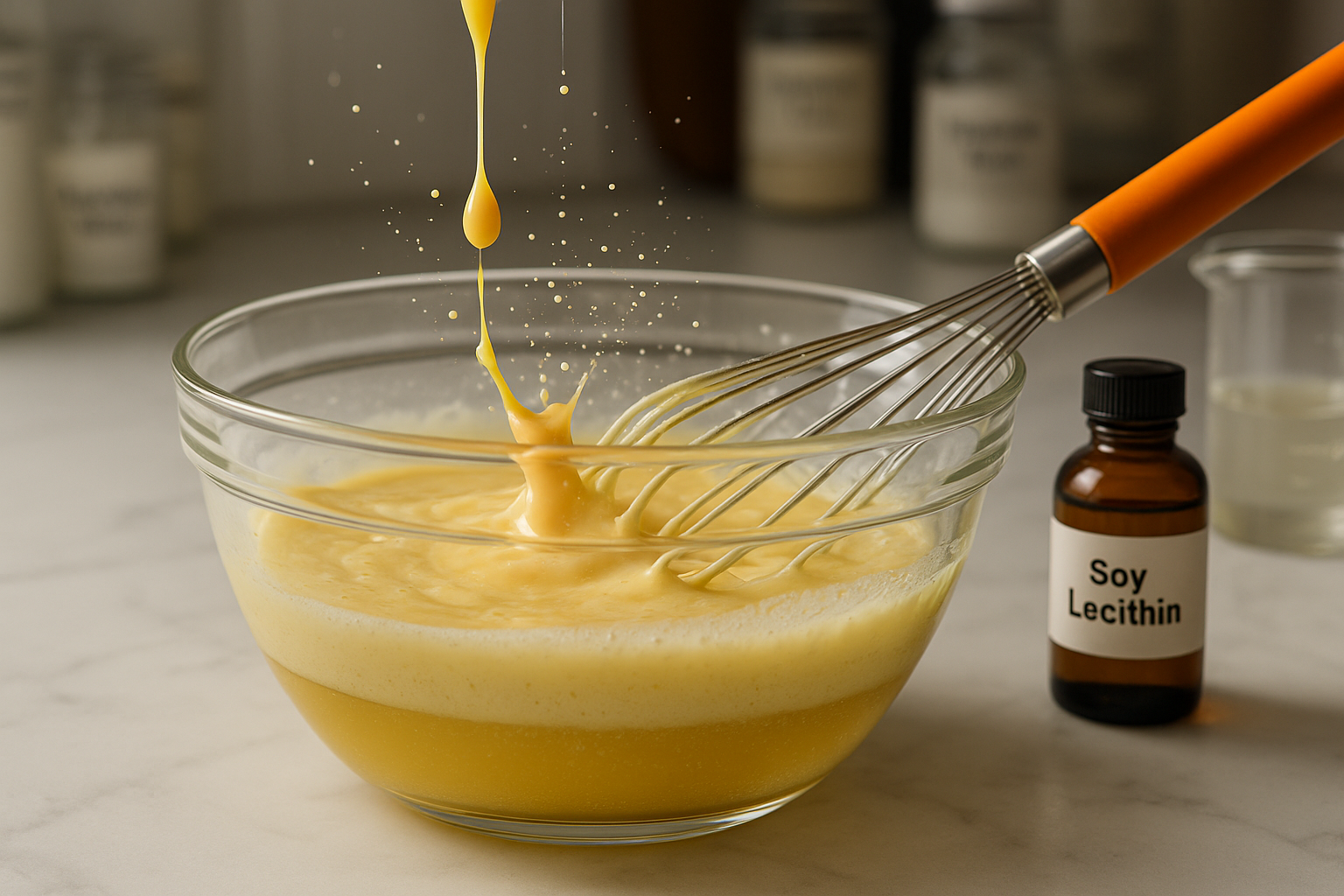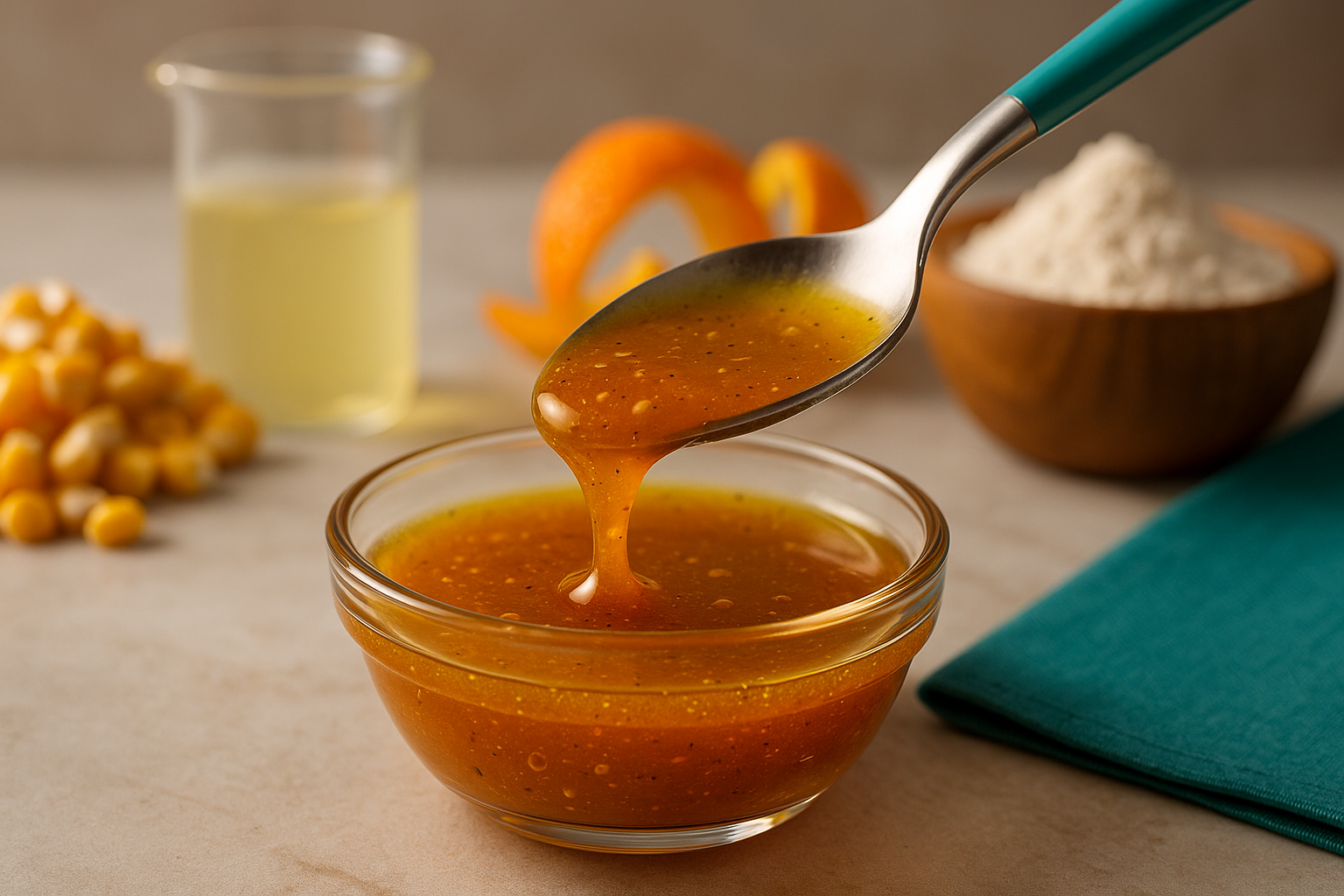
Gum Tragacanth: The Natural Thickener & Stabilizer for Food and More
SUBSCRIBE TO OUR BLOG
Promotions, new products, and recipes.
What if a single natural ingredient could improve food texture, stabilize cosmetics, and even aid in medicine? Meet Gum Tragacanth—a powerful thickener with diverse applications. In this article, we’ll uncover how it works, its many uses, and why it’s such a valuable ingredient in various industries!
Are you curious to learn the story behind an all-natural gum that’s changing how art, food, and medicine are created? Prepare yourself for a deep dive into gum Tragacanth, this unique substance is revolutionizing multiple industries with its remarkable properties. By the end of reading this blog post, we’ll have made sure you understand everything about gum Tragacanth so that anyone can use it in their project!
From crafting stunning sugar flowers to finishing leather edges or thickening dressings and preserving medications – no task seems too hard when armed with our newfound knowledge of versatile gum Tragacanth. Let’s explore what makes it sustainable and beneficial across many sectors without any Delay!
Key Takeaways
-
Gum Tragacanth is a versatile crafty companion for artists and chefs, with unique properties across industries.
-
Mixing it correctly ensures optimal results and the right application techniques can create masterpieces!
-
Sustainability concerns due to its uncertain supply have led to a search for alternatives, so pick your gum wisely!
The Versatility of Gum Tragacanth
Gum Tragacanth, a natural gum derived from the stems and branches of certain Asiatic species of Astragalus, has an incredible set of properties that have enabled it to be used in many fields. Its major fractions (tragacanthin and bassorin) create smooth gels with high viscosity which form thick colloids. This remarkable material is suitable for various industries such as art-making, flavoring food products, or suspending medicines into emulsions.
In artistic endeavors like watercolor painting or pastel making this gum offers benefits due to its adaptability when mixed together with other substances. When added to enhance the texture and flavor profiles in culinary creations gum Tragacanh can work wonders on dishes that need something extra special. Pharmaceutical applications benefit greatly because they become easier suspensions thanks again the presence of these major fractions that enable greater control over formulations improving end results across all sectors involved here too!
Finally, we come back around full circle realizing once more just how versatile this product is – from forming emulsion-based complexes within cosmetics through creating anti-clotting polysaccharides impacting medicine delivery right up until beauty aid creams utilize tractable substrates attributed by their rich related ingredients offering renewed flexibility seen herein alongside unique stability levels few others are able achieve quite so dependably time after time…
Artistic Uses
Gum Tragacanth is an essential addition to any artist’s supplies, with its natural adhesive properties and color-enhancing abilities helping create stunning artwork. It can serve as a traditional binder in watercolor painting for attaching the pigments to paper, while also making it possible to fashion lifelike flowers out of wires using sugarcraft - when this material dries, it becomes flexible and transparent which adds delicacy and beauty. A fundamental part of artistic circles is due to these characteristics. Gum Tragacanth has quickly become indispensable for makers everywhere!
Food Applications
Gum Tragacanth, a natural phenomenon and customary binder in the culinary world is renowned for its remarkable abilities. This gum proves invaluable when it comes to thickening sauces, emulsifying relishes, stabilizing condiments, or binding together ingredients with high fruit acidity like confections and sweets.
Gum Tragacanth plays an important role in desserts such as ice cream. Helping preserve their smoothness over time while also reducing iciness that could occur during storage, properties which make this versatile gum indispensable from salad dressings through to dessert toppings. Ultimately then it becomes clear just how valuable of a contribution traditional binders like gum Tragacanthus can provide towards many forms of food production today!
Pharmaceutical Products
Gum Tragacanth is seen as a reliable asset in the pharmaceutical realm due to its versatile qualities. As an agent capable of providing excellent suspension, it has been used for many years to make spermicidal jellies and oil emulsions, while also offering optimal stabilizing capabilities when added at just 0.2% weight/volume with procaine penicillin suspensions. Proving its multifunctional nature are external lotion applications where Gum Tragacanth acts as an effective mucilage ingredient – Enforcing this widely applied component’s importance within the field of medicine.
Preparing and Using Gum Tragacanth
The process for creating gum Tragacanth is relatively straightforward. It requires turning the crystals into a powder, which then needs to be mixed with lukewarm water until it reaches an ideal consistency. After that, a slightly moist sponge or dauber can be used to apply the gum and form treated edges on materials like leather. The versatility of this material allows diverse ways in which it might come in handy, from using brushstrokes when painting to giving food products just enough body they need. Whether you’re searching for something special that will enhance your artwork or looking for an effective thickener component, look no further: Gum Tragacanth has all bases covered!
Mixing Solutions
To achieve the finest results with gum Tragacanth, understanding how to mix it accordingly is key. For example for use in watercolors and pastels, a ratio of one teaspoon per eight ounces of tap or distilled water should be applied. Doing this allows you to make the best use of its properties and see positive outcomes from your project. To produce thin solutions that are ideal as a spray, pour 1 quart into the mixture overnight so that when air drying no brittleness will occur. Adjusting the blending process specifically for each need can ensure great end-products every time using gum tragacanth!
Application Techniques
Using gum Tragacanth, artisans and food producers alike can master unique ways of application in order to enjoy its full potential. For the art industry, an artist might take a brush to include it within their watercolor pieces. When looking for something as an emulsifier or thickener for culinary purposes though, this gum may be integrated directly into items on offer.
As leatherworking calls for a smooth polished finish when using gum Tragacanth, applying it with a slightly damp sponge or dauber is recommended then burnishing overtop surfaces will provide just that effect!
The Science Behind Gum Tragacanth
Gum Tragacanth is a natural gum with remarkable versatility, brought about by its intricate molecular structure. Its makeup of various polysaccharides (such as tragacanthin and bassorin) impart special features that make it useful in an array of contexts. When set beside other gums like gum Arabic, the distinction between them can be seen through their specific qualities and applications.
Digging into the science behind this substance allows us to appreciate how different it is from all others. Despite originating from tree secretions there are distinct dissimilarities among varieties of gum products at play here. Exploring these discrepancies will provide more information on why certain gums hold preferential status for particular uses over others based on abilities or preference factors one may have not considered before but holds valuable insight when employed strategically within design projects or product development initiatives alike!
Molecular Structure
The molecular structures of the gum and gum Arabic are quite different from one another. Gum Tragacanth is a complex combination containing galacturonic acid, galactose, fucose, xylose, and arabinose which gives it its unique qualities that have many uses such as applying a thin coat in certain processes. Contrastingly gum Arabic consists mainly of linked galatcse units with some additional sugars forming the branches. All contribute to varied properties between these two gums although both come from plant sources ultimately having multiple applications across various fields.
Comparison with Other Gums
When it comes to the field of natural gums, gum Tragacanth, and gum Arabic are usually compared due to their origin as exudates from a tree. Yet they possess varying characteristics that make them ideal for various uses.
Gum Tragacanth stands out thanks to its high viscosity which renders it popular for thickening, emulsifying, and stabilizing solutions. In contrast, gum Arabic is known for possessing low adhesion along with less stability when used on substances like thickeners or emulsions than what would be expected from using Gum Tragacanth.
By being aware of these individualistic properties between both types of gums users can pick out the one best suited for each requirement without any issues.
Sourcing and Sustainability of Gum Tragacanth
The production of Gum Tragacanth is influenced by factors like humidity, temperature, and rainfall. Its source is the sap derived from Astragalus species indigenous to Asia and the Middle East. This natural gel thickener has raised concerns over sustainability due to uncertainty in supply as well as high costs for extraction. Alternative thickeners such as xanthan gum, carrageenan, or guar have become part of some industries because they create a thicker result at a cheaper cost than what tragacanth provides.
Taking all this into consideration when talking about Trucaganth’s sustainability we can analyze both its origin -Astragus species found originally in Asian countries -Middle East-as well as the effects weather conditions have on its harveting cycle.
Origin and Production
The sap from several species of Middle Eastern Astragalus plants, such as A. adscendens, A. gummifer, and A. microcephalus are dried to obtain gum Tragacanth. It is an intensive procedure that adds to its cost. Temperature changes along with humidity and rainfall can also affect the production rate of this precious gum making it challenging for industries dependent on accessing it.
Sustainability Concerns
Given the unpredictable supply of gum Tragacanth along with its hefty cost, many industries have been forced to explore alternate thickeners and emulsifiers. The uptake of more reliable alternatives such as xanthan gum, guar gum, and carrageenan has Increased due to their secure availability coupled with a lower price tag.
Gum Tragacanth is indeed renewable but can be affected by environmental conditions that could potentially lead to shortages in production or extreme changes in prices. With this knowledge at hand, companies are increasingly looking towards sustainable substitutes causing an uncertain future for the utilization of Gum Tragacanth going forward.
Creative Applications: Leathercraft and Floral Artistry
Gum Tragacanth is an invaluable resource for creatives, providing a range of uses from burnishing leather edges to crafting delicate sugar flowers. Its unique properties allow it to be employed in various ways. Leathercraft and floral artistry are two such examples where the gum’s versatility can really be appreciated and provide inspiration for other projects requiring its use.
Leather Edge Burnishing
For achieving a smooth, polished finish on leather goods with beveled edges such as wallets, belts, and handbags. An edge beveler should first be used before applying gum Tragacanth. By using a slightly damp sponge or dauber to gently rub in the gum onto colored veg-tanned leather surfaces it will give these products an added professional appeal while also providing durability by protecting its outer layer from damage.
Creating Lifelike Flowers
Gum Tragacanth is an essential component for making stunningly realistic sugar flowers suitable to adorn cakes and flower arrangements. Rolling it out thinly before drying gives the paste a sturdy, durable texture that can be easily molded into life-like petals and leaves using cookie cutters or tutorials. Thus, this gum brings about creative options with cake decoration as well as other artistic displays.
The versatility of gum Tragacanth proves useful in expressing floral artistry through beautifully crafted wedding cakes or elaborate bouquets, affording any user limitless potential.
Summary
Gum Tragacanth is a remarkable natural resource with astounding applications in different industries, including art and food production. Its versatile properties have the potential to drive innovation more than ever before.
It’s essential that we use this gum responsibly. Being aware of any sustainability issues surrounding its manufacture so as to utilize alternatives when needed and ensure environmental protection. With these steps taken into consideration, Gum Tragacanth could truly revolutionize many fields for years ahead.
Frequently Asked Questions
What is gum tragacanth used for?
Gum Tragacanth is a sticky resin used as an ingredient in various medical remedies to treat conditions such as diarrhea and constipation. It also has several uses within leatherworking, serving mainly as a burnishing compound for edges while providing stabilization, emulsification, and thickening properties to food products.
Is it safe to eat gum tragacanth?
Gum made from Tragacanth is considered to be safe for consumption, as the FDA acknowledges when used according to proper guidelines and it has a well-established background of being utilized in foods and pharmaceuticals.
One must drink plenty of fluids while consuming tragacanth gum so that potential blockages in either the throat or intestines are avoided. All things considered, there shouldn’t be any issues with eating this type of gum safely.
What is a good substitute for gum tragacanth?
If you’re in search of a gum tragacanth alternative, Sugarflair’s Sugarcel is the ideal option. It mimics how gum tragacanth acts. It makes sugar paste stiffer and morphs royal icing into florist paste.
What does gum tragacanth do for leather?
Gum Tragacanth can be used to give a beautiful glossy finish and sheen when dealing with leather edges. It’s an easy way for those who work on their own leather projects to achieve that perfect look they want. This substance helps make the procedure simple, moistening up the edge without sacrificing any detail or color of it. With this product, you get that nice professional touch needed for excellent results in your craftsmanship!
How is Gum Tragacanth used in the food industry?
Gum Tragacanth is a popular ingredient in food, used to thicken and bind items such as ice cream, salad dressings, and other treats. It also functions to emulsify and stabilize these products.


|
About the Author Ed is the founder of Cape Crystal Brands, editor of the Beginner’s Guide to Hydrocolloids, and a passionate advocate for making food science accessible to all. Discover premium ingredients, expert resources, and free formulation tools at capecrystalbrands.com/tools. — Ed |
Enjoyed this post? Subscribe to The Crystal Scoop
Food-science tips, ingredient know-how, and recipes. No spam—unsubscribe anytime.
- Choosing a selection results in a full page refresh.



